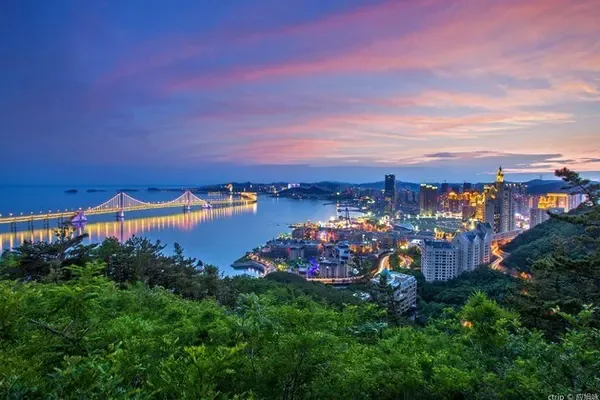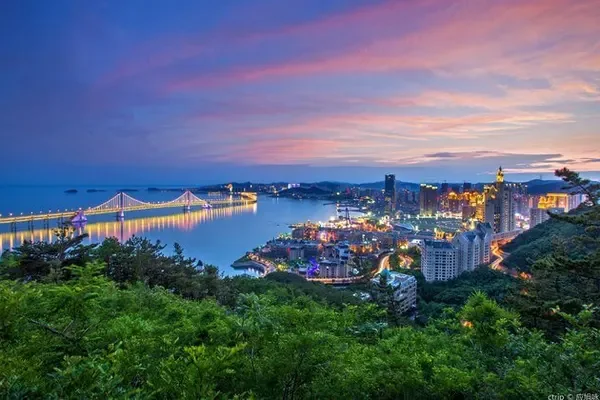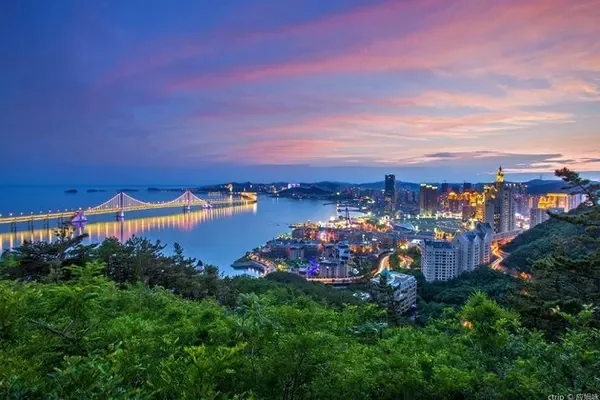Walk into Zhuozhou, an ancient county
In the middle of winter, the sky is gloomy, and the northern villages are bleak.
I came to Zhuozhou, an ancient county, visited the hometowns of Liu Bei and Zhang Fei and the Sanyi Palace, felt the long history and culture of the Three Kingdoms, and heard the desolate and soul-stirring singing of the ending song "The Sky of History" in "The Romance of the Three Kingdoms" in my ears. The vicissitudes of history and the tragedy of gold and iron horses.
Dim the shadow of the sword
Far away, drums and horns
There are vivid faces flying in front of my eyes
Annihilated the ancient road of yellow dust
Desolate Fenghuo Border Town
Years, you can’t take away those strings of familiar names
rise and fall who decides
Is there no basis for prosperity and decline?
Where is the wind and clouds
Changed time and space
gathering and parting is fate
Clutch is always about love
Take care of your life
He Ji post-comment
The Yangtze River turns into tears on purpose
The Yangtze River sings with love
A few stars twinkle in the sky of history
A heroic spirit is galloping in the world...

The hometown of Liu Bei and Zhang Fei, the Sanyi Palace was built by decree
Sanyi Palace is located in Lousangmiao Village, Songlindian Town, Zhuozhou City, Hebei Province. The scenic spot faces south as a whole, covering an area of more than 60 mu. The seal book "Edict to build Sanyi Palace". The whole temple is large in scale, majestic in momentum and profound in cultural heritage. It is the best place to worship through the ages and find the soul of loyalty.
The Romance of the Three Kingdoms begins here, and Taoyuan's righteousness comes here to find its roots. Sanyi Temple, whose "righteousness" has a long history, can be called the beginning of the Three Kingdoms culture. The "three righteousnesses" refer to Liu Bei's "benevolence and righteousness", Guan Yu's "loyalty" and Zhang Fei's "righteousness" are the "three righteousnesses".
Sanyi Palace was first built in the Sui Dynasty, and was continuously repaired in the Tang, Liao, Yuan, Ming and Qing dynasties. It has a history of more than 1,400 years. Sanyi Palace was built to commemorate Liu Bei, Guan Yu and Zhang Fei's sworn brothers in Taoyuan. For thousands of years, there has been an endless stream of worshipers, and at the same time, many popular poems have been left behind. It has become the best place for people to worship through the ages and find the soul of loyalty. Every year during the temple fair of Sanyi Palace, people from nearby gather here, and it is very lively. It is one of the eight scenic spots in Zhuozhou, and it is called "Lousangchun Society". There are many ancient cypresses in the palace, tall and handsome, and the statues of the characters are lifelike. The emperors, generals, and literati of all dynasties rushed here to wander and look at them. Wang Ruixin of the Qing Dynasty sighed in "Song of Lou Sang": "Thousands of orthodoxy will be honored in history, and the two characters are fair to determine Ziyang. How many people are called kings and emperors, ask whose temple looks like Lou Sang." According to records, the Sanyi Palace was rebuilt in the fourth year of Tang Qianning (897), and it was repaired in subsequent dynasties with a grand scale. It is a pity that most of the buildings were demolished during the "Cultural Revolution", and only one mountain gate and Ming Zhengde stele remained.
In 1996, the Sanyi Palace was restored and rebuilt according to the original style, and a total of 7 parts were built, including the main hall, the Nine Dragon Stele, the worship stone, and the inner and outer palace walls. From the outside to the inside, there are Shanmen, Horse God Hall, Guan Yu Hall, Zhang Fei Hall, Main Hall, Tui Palace, Wuhou Hall, Shaosanyi Hall, and 87 statues are built in the original form. The restored Sanyi Palace still retains the architectural style of the Han Dynasty. The plaque in the middle of the mountain gate reads "Imperial Construction of the Sanyi Palace". There are three auspicious clouds on the plaque, with a "Sun" character engraved on it and a "Moon" character engraved on the shadow, alluding to Liu Guanzhang. The spirit of righteousness will forever shine on the sun and the moon and inspire future generations.









Zhuozhou Film and Television City, imitating ancient Seoul, Tang City, Tongque Terrace
Zhuozhou Film and Television City is located in Wharf Town, Zhuozhou City, Baoding City, Hebei Province. It is a large-scale comprehensive tourist area that mainly provides film and television shooting and production services, and also has functions such as sightseeing, cultural entertainment, leisure and vacation. In 1990, it was built by CCTV with an investment of 300 million yuan. The main attractions of Zhuozhou Film and Television City are composed of redundant film and television shooting landscapes such as Tang City, Seoul, Tongque Terrace, Ming and Qing imperial palaces and traditional dwellings. Covering an area of 1.5 million square meters, it is an antique architectural complex with the background of the Spring and Autumn and Warring States, Qin and Han, Three Kingdoms, Tang, Ming and Qing Dynasties. The TV series "Three Kingdoms", "Water Margin", "Journey to the West", movies "Tongque Terrace", "Guan Yunchang" and other works were filmed in Zhuozhou Film and Television City.
Tangcheng, located at the northeast end of Zhuozhou Film and Television City (east of the main entrance of the scenic spot), is a Tang Dynasty scenic spot built on the site of the historical drama "Tang Minghuang", covering an area of 150 mu. The main scenic spots are: Chang'an City Tower, Bianliang City Tower, Luoyang City Tower, Imperial Garden and Wangfuyuan, Tang Dynasty city, post station, market trade market, inn, shop, military barracks, folk residences, etc. Representative works of Tangcheng: "The Hero of Troubled Times Lu Buwei", "Wu Zetian", etc.
Seoul, located at the northwest end of Zhuozhou Film and Television City (the west side of the main entrance of the scenic spot), is a Han Dynasty scenic spot built on the site of the historical drama "Romance of the Three Kingdoms", covering an area of 500 mu. The main attractions are: the 2.1-kilometer-long city of the Han Dynasty, the street scenes of Wei, Shu, and Wu, Xuchang City Tower, Xuzhou City Tower, Jingzhou City Tower, Jianye City Tower and Chengdu City Tower, as well as Hanwang Palace, Taigong Palace, Prime Minister's Mansion, Zhifu Court, etc. The Great Wall complex is about 200 meters long. Shijing Street in the Han Dynasty was built with palaces, temples, teahouses, restaurants, fireworks lanes, etc. Bamboo buildings and huts in Shu Street are mainly shops, noodle shops and market buildings. The streets in Wei State are neat, and the buildings on both sides are either convex or concave, reflecting the northern architectural style of the Three Kingdoms period. Wu Street is built along the river, and most of them are wooden structures, reflecting Wu culture and Jiangnan characteristics. Representative works in Seoul: "Eastern Zhou Dynasty", "Three Kingdoms".
Tongque Terrace is located in the middle of Zhuozhou Film and Television City (south of Seoul), with a construction area of 13,248 square meters and a height of 26 meters. On the left side of Tongque Terrace is Yulong Terrace, and on the right side is Jinfeng Terrace. Representative works of Tongque Terrace: "Looking for Qin Ji", "The Legend of Miyue", "Tongque Terrace" and so on.









After Cao Cao killed the Yuan brothers, he stayed in Yecheng at night and saw a golden light rising from the ground in the middle of the night. He dug up a bronze sparrow the next day. Now it is an auspicious sign to get the bronze sparrow. Cao Cao was overjoyed, so he decided to build the bronze sparrow tower on the Zhangshui River to show his contribution to calm the world.


conclusion
Aoyama is still there, How Many Suns.
The Three Kingdoms era has long since disappeared in the vast history of China. But the characters and history and culture of the Three Kingdoms are still alive in the land of China, and they are deeply rooted in the blood.
A few stars flicker in the historical sky, and a heroic spirit is galloping in the world.
When visiting ancient times, we should take history as a mirror, learn more positive loyalty, heroism, and heroism, and accompany us to gallop through the years of life!
(Part of the introductory text is taken from the Internet, and the photo was taken by mobile phone in January 2015)



